|
Take a look at this handy pie chart and you’ll see that simply flushing our toilets eats up 30% of our water budget; laundry takes up another 20% -- that’s 50% of our water usage which could be supplied by rainwater. Keep in mind that producing purified fresh water comes at a very high cost, yet every day a huge percentage of this expensive-to-treat water is wasted in homes and industry. Using rainwater to flush toilets, do laundry, fill the pool or hot tub, wash our cars, fill up fire suppression tanks, or simply water our lawns and gardens, could save more than 50% of our fresh water usage.
|
|
6. Where does your water go? |
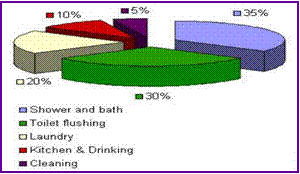
|
To assess your how much water you use, surf the net to one of the sites below. Water calculators are designed to calculate your “water footprint” and show an individual or business how their water usage compared to their peers. Take a look at the calculators below to see where you stand and start conserving water today! The One Minute Water Calculator h2O Conserve Institute of Water Education The Global Water Tool |
|
9. How can I calculate how much water I use? |

|
Your fridge contains more water than you'd think. The bottle of mineral water, for instance, used five times its volume in the manufacture of the bottle. That steak came from a cow that had to be fed and watered for three years. This figure is known as a 'water footprint' and we measure how your daily rations add up. 1 can of Coke 1kg of Beef 300g of Cheese 1 loaf of White Bread 1kg of Chicken Half a dozen Fresh Eggs 1 liter of Milk 1 Orange 1 bottle of Wine 1kg of Lamb 1 Tomato Tomatoes are a water-intensive crop, often grown in water-scarce regions. The tomato industry is responsible for polluting 29m m3 of fresh water resources/year |
|
10. How much water does it take to make common everyday consumables? |
|
Harvesting rooftop rainwater is usually seen as a way to provide water supplies for a home or business while the environmental impacts are often overlooked. A seemingly simple task of collecting rainwater and reusing can prevent considerable amounts of sediment and pollutants from entering local waterways. Non-point source pollution that results from stormwater runoff often contains pesticides and fertilizers from local landscapes, oils from roads and driveways, as well as eroded sediment and agricultural waste. Upon the installation of rainwater harvesting systems at the downspouts of buildings, water is intentionally contained and thereby prevented from running over landscapes and impervious surfaces, or contributing to storm water damage. Recent studies have shown that pollutants in storm water runoff are the number one cause of pollution in rivers, streams, lakes, and wetlands. You can slow this process by harvesting your rainwater and implementing rainwater retention techniques and technologies.
|
|
The answer to this question is subjective at best. Everything depends on your short- and long-term vision, the complexity simplicity of the property, as well as the local climate . Each rainwater system is custom-designed to meet the specifications required by law, utilizing the latest technologies to create a system that works for you. That said. rainwater harvesting systems can range from a few thousand dollars to double digits and beyond, but the rewards are many. Perhaps the most important is knowing that you are part of the solution rather than the problem.
|
|
Good question! The answer is probably going to be a little different for everyone. However, there are a few common reasons… You can: · Significantly decrease your monthly water and electric bills. · Be responsible for your own water usage by decreasing your dependence on our shrinking aquifers and expensive water treatment plants. · By reducing storm water runoff, you help to decrease non-source pollution. · Rainwater is “soft water” and is typically better for the plants. · President Obama has called up on all of us to step up to the plate and do our part to walk a little lighter on the planet. Conserving water, harvesting the rain and recycling graywater are three responsible ways to do your part while protecting your family and/or business. |
|
Frequently Asked Questions |
|
Designing the right kind of system for you requires striking the right balance between a handful of important ecological considerations. A rainwater harvesting system can be as small as a few rain barrels connected to homeowners' downspouts for landscape irrigation to as large as expansive tanks for home uses such as laundry washing and flushing toilets to huge tanks for refilling swimming pools and fire abatement. Businesses can contribute to the greening of the planet by designing rainwater harvesting systems in all new building proposals.
|
|
3. How does rainwater harvesting work? |
|
4. Why should I harvest rainwater?
|
|
5. How much does a system cost?
|
|
7. Does harvesting rain help to combat pollution? |
|
People the world over are being forced to wake up to the challenges posed by water scarcity . Hence, issues such as rainwater harvesting, soakaways, higher water costs, changing groundwater levels and storm water balancing concern each of us. Meeting these different rainwater issues requires the installation of innovative, durable products., including graywater recycling systems. Once you have harvested and stored your rainwater, you can use it to flush toilets, do laundry, wash your car, and water your garden and lawn. If a potable filter is employed, then you can also use it to shower in. cook with and drink. The possibilities are endless! |
|
8. What should we do with rainwater? |

|
Rainwater Filters |
|
Rainwater Products |
|
Storage Tanks |
|
Graywater Products |
|
Ap Rainwater Harvesting & Graywater GARDEns |
|
Providing Innovative Green Solutions For All Your Water Needs |
|
Considering that plastics are made from non-renewable petroleum and natural gas, it's not surprising that plastic manufacturing is a major source of industrial pollution. A few facts…
¨ A 16-oz. #1 water bottle generates more than 100 times the toxic emissions to air and water than making the same size bottle out of glass. ¨ The annual fossil fuel footprint of bottled water consumption in the United States for pumping and processing, transportation, and refrigeration is more than 50 million barrels of oil—enough to run 3 million cars for one year. ¨ If everyone drank as much bottled water as Americans do, the world would need the equivalent of more than 1 billion barrels of oil to produce close to 650 billion individual bottles. ¨ Major emissions from plastic production processes include sulfur oxides and nitrous oxides (both of which contribute to global warming) and the chemicals styrene, benzene and trichloroethane.
Plastics are classified by their "resin identification code"—a number from #1 to #7 that represents a different type of resin. That number is usually imprinted on the bottom of your container; flip it upside down, and you'll see a recycling triangle with the number in the middle. Here's a quick breakdown of plastic resin types:
#1 Polyethylene Terephthalate (PET or PETE) - Disposable soft drink and water bottles #2 High density Polyethylene (HDPE) - Milk jugs, liquid detergent bottles, shampoo bottles #3 Polyvinyl Chloride (V or PVC) - Examples: Meat wrap, cooking oil bottles, plumbing pipes #4 Low Density Polyethylene (LDPE) - Cling wrap, grocery bags, sandwich bags #5 Polypropylene (PP) - Cloudy plastic water bottles, yogurt cups/tubs #6 Polystyrene (PS) - Disposable coffee cups, clam-shell take-out containers #7 Plastics invented after 1987 including polycarbonate (PC), polylactide (PLA), plastics made from renewable resources as well as newer plastics labeled "BPA-Free" - Baby bottles, some reusable water bottles, stain-resistant food-storage containers.
|
|
11. What’s the truth about plastic? Are plastic water bottles a health hazard? |
|
12. What is Bisphenal A and why should we avoid it? |
|
Your body is probably home to a chemical called Bisphenol A, or BPA. It’s a synthetic estrogen that United States factories now use in everything from plastics to epoxies — to the tune of six pounds per year. That’s a lot of estrogen. More than 92% of Americans have BPA in their urine, and scientists have linked it — though not conclusively — to everything from breast cancer to obesity, from attention deficit disorder to genital abnormalities in boys and girls alike. Now it turns out it’s in our food.
Consumer Reports Magazine recently tested an array of brand-name canned foods for a report in its December issue and found BPA in almost all of them. The magazine says that relatively high levels turned up, for example, in Progresso vegetable soup, Campbell’s condensed chicken noodle soup, and Del Monte Blue Lake cut green beans. The magazine also says it found BPA in the canned liquid version of Similac Advance infant formula (but not in the powdered version) and in canned Nestlé Juicy Juice (but not in the juice boxes). The BPA in the food probably came from an interior coating used in many cans. Should we be alarmed?
The chemical industry doesn’t think so. Steven Hentges of the American Chemistry Council dismissed the testing, noting that Americans absorb quantities of BPA at levels that government regulators have found to be safe. Mr. Hentges also pointed to a new study indicating that BPA exposure did not cause abnormalities in the reproductive health of rats. But more than 200 other studies have shown links between low doses of BPA and adverse health effects, according to the Breast Cancer Fund, which is trying to ban the chemical from food and beverage containers.
“The vast majority of independent scientists — those not working for industry — are concerned about early-life low-dose exposures to BPA,” said Janet Gray, a Vassar College professor who is science adviser to the Breast Cancer Fund.
Published journal articles have found that BPA given to pregnant rats or mice can cause malformed genitals in their offspring, as well as reduced sperm count among males. For example, a European journal found that male mice exposed to BPA were less likely to make females pregnant, and the Journal of Occupational Health found that male rats administered BPA had less sperm production and lower testicular weight.
This year, the journal Environmental Health Perspectives found that pregnant mice exposed to BPA had babies with abnormalities in the cervix, uterus and vagina. Reproductive Toxicology found that even low-level exposure to BPA led to the mouse equivalent of early puberty for females. And an array of animal studies link prenatal BPA exposure to breast cancer and prostate cancer.
While most of the studies are on animals, the Journal of the American Medical Association reported last year that humans with higher levels of BPA in their blood have “an increased prevalence of cardiovascular disease, diabetes and liver-enzyme abnormalities.” Another published study found that women with higher levels of BPA in their blood had more miscarriages.
Scholars have noted some increasing reports of boys born with malformed genitals, girls who begin puberty at age 6 or 8 or even earlier, breast cancer in women and men alike, and declining sperm counts among men. The Endocrine Society, an association of endocrinologists, warned this year that these kinds of abnormalities may be a consequence of the rise of endocrine-disrupting chemicals, and it specifically called on regulators to re-evaluate BPA.
Last year, Canada became the first country to conclude that BPA can be hazardous to humans, and Massachusetts issued a public health advisory in August warning against any exposure to BPA by pregnant or breast-feeding women or by children under the age of 2. The Food and Drug Administration, which in the past has relied largely on industry studies — and has generally been asleep at the wheel is studying this issue again. Bills are also pending in Congress to ban BPA from food and beverage containers.
“When you have 92 percent of the American population exposed to a chemical, this is not one where you want to be wrong,” said Dr. Ted Schettler of the Science and Environmental Health Network. “Are we going to quibble over individual rodent studies, or are we going to act?” While the evidence isn’t conclusive, it justifies precautions. In my family, we’re cutting down on the use of those plastic containers that contain BPA to store or microwave food, and I’m drinking water out of a metal bottle now. In my reporting around the world, I’ve come to terms with the threats from warlords, bandits and tarantulas. But endocrine disrupting chemicals — they give me the willies.
~ By NICHOLAS D. KRISTOF, Article Published: November 7, 2009
|
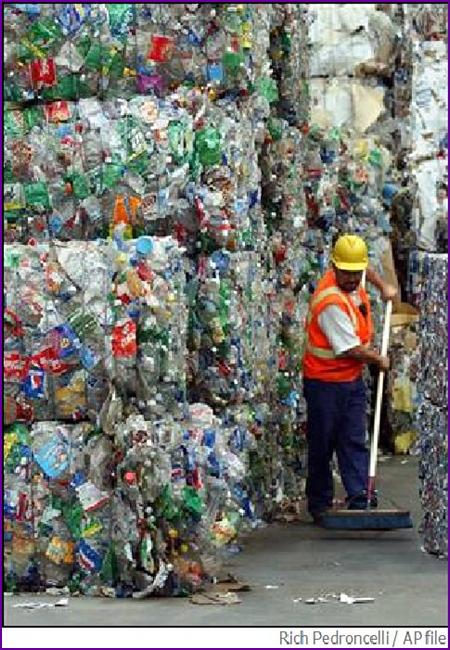

|
Due to climate change, poor maintenance of infrastructure —a side effect of privatization—potable water is quickly becoming an issue all over the planet. But thanks to modern technologies and innovative thinking, we now have the ability to make some of the purest water crystals on the planet. The condensation of water vapor into great tasting water is a relatively new technology that mirrors the earth’s natural condensation process. The possibilities are endless. Atmospheric water tastes great; it’s perfectly pH balanced and bacteria free and provides clean air as a byproduct. Generators come in a variety of sizes from home/office until that make up to 7 gallons a day to commercial units that generate 1400 gallons a day. Instant water from the air can mean the difference between life and death in any emergency situation; Aridtec machines are already meeting water needs in hotspots around the world. |
|
1. Why is atmospheric water generation a revolutionary answer to drinking water issues worldwide? |
|
2. How does atmospheric water generation work?
|
|
Atmospheric water makers replicate the earth’s evaporation/condensation cycle by coalescing water vapor molecules. Air is drawn through a specifically designed air filter that removes dust and purifies the air. The system enhances water condensation and harvests water efficiency even at low humidity conditions. As water condenses, it is stored in a stainless steel container. The entire water system is then purified through a series of scientifically engineered water purification processes that together ensure the highest water quality standards. The end result is pure, delicious, pH-balanced drinking water. Atmospheric water generators can be used anywhere, opening the door to a multitude of possibilities. They are considered an alternative water source for properties that do not have enough water from the well. It works to dehumidify the room it is in and the byproduct is clean air. Additional applications for commercial units include cleaning the air while dehumidifying it, allowing building owners to downsize current heating and air conditioning systems while getting rid of dehumidifiers and air purifiers completely. |
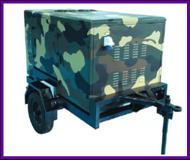
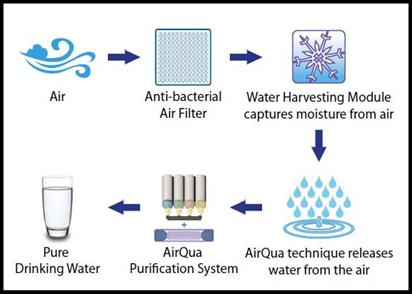
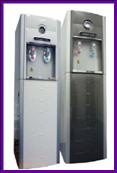
|
What To Buy |
Plastics to Avoid |
|
#2 HDPE, #4 LDPE and #5 PP: These three types of plastic are your best choices. They transmit no known chemicals into your food and they're generally recyclable; #2 is very commonly accepted by municipal recycling programs, but you may have a more difficult time finding someone to recycle your #4 and #5 containers. |
#7 PC: The only plastic made with bisphenol A, polycarbonate is used in baby bottles, 5-gallon water-cooler bottles and the epoxy linings of tin food cans. Bisphenol A has been linked to a wide variety of problems such as heart disease, obesity, prostrate cancer, diabetes and childhood behavioral problems. |
|
#1 PET: Fine for single use and widely accepted by municipal recyclers; avoid reusing #1 water and soda bottles, as they're hard to clean, and because plastic is porous, these bottles absorb flavors and bacteria that you can't get rid of. |
#3 PVC: Used frequently in cling wraps for meat, PVC contains softeners called phthalates that interfere with hormonal development, and its manufacture and incineration release dioxin, a potent carcinogen and hormone disruptor. |
|
PLA: plastics made from renewable resources such as corn, potatoes and sugar cane and anything else with a high starch content; although you can't recycle these plant-based plastics, you can compost them in a municipal composter or in your backyard compost heap. |
#6 PS: Polystyrene-foam cups and clear plastic take-out containers can leach styrene, a possible human carcinogen, into food.
|